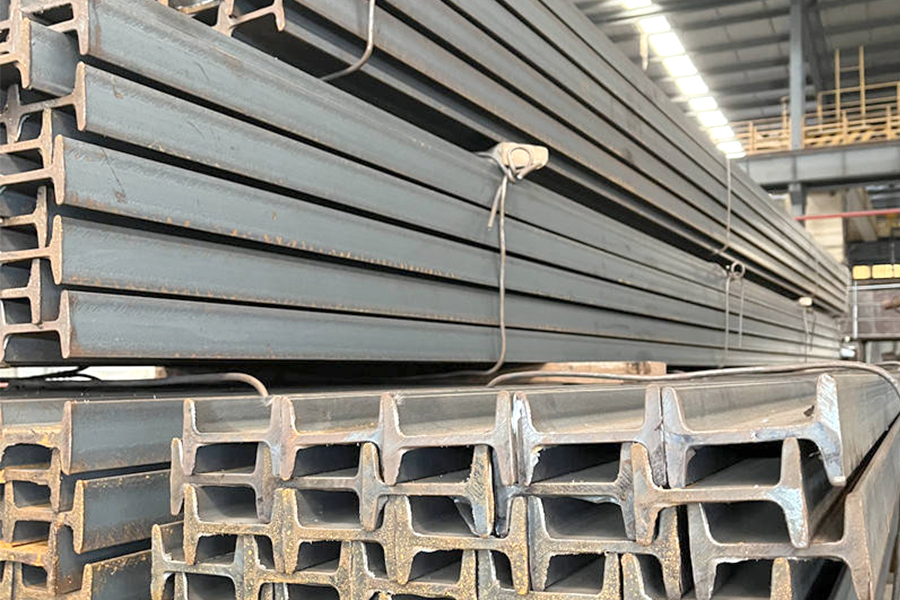The marine environment places extremely high demands on the performance of materials. Long-term exposure to high-salt, high-humidity, and highly corrosive environments can easily cause rust, corrosion, fatigue fracture, and other problems in traditional metal materials. In order to meet the use requirements of ships, offshore platforms, coastal buildings, dock facilities, and other fields, stainless steel profiles have become an ideal material choice.
1. What are stainless steel profiles?
Stainless steel profiles are metal structural parts with certain cross-sectional shapes and sizes formed by hot rolling, cold rolling, extrusion, welding, and other processes using stainless steel materials (such as 304, 316, 2205, etc.). Common profiles include angle steel, channel steel, I-beam, T-beam, round pipe, square pipe, etc., which are widely used in building structures, mechanical components, decoration projects, and special environmental projects.
2. Special challenges of the marine environment
The marine environment is one of the most challenging environments in nature, and its main features include the following:
High salt spray concentration: The air contains a large amount of sodium chloride (NaCl), which accelerates metal corrosion.
High humidity and large temperature changes: long-term humidity and significant temperature difference between day and night can easily cause condensation and form an electrochemical corrosion environment.
Ultraviolet rays and wind and wave impact: continuous mechanical wear and ultraviolet radiation accelerate material aging.
Biological attachment (marine biofouling): seaweed, shellfish, etc. will adhere to the surface of the structure, affecting the function of the equipment.
Therefore, it is difficult for ordinary steel or painted metal to maintain performance for a long time in the marine environment, while stainless steel profiles show excellent advantages in this environment.
3. Five advantages of stainless steel profiles in the marine environment
1. Excellent corrosion resistance
The surface of stainless steel contains a dense chromium-rich passivation film, which can effectively prevent chloride ions from corroding the metal matrix. In particular, 316 stainless steel (containing molybdenum) and 2205 duplex stainless steel have strong resistance to chloride corrosion in salt spray environments and are the preferred materials in marine environments.
2. Excellent structural strength and stability
Stainless steel profiles have high strength and good toughness, and can effectively withstand the long-term use requirements of offshore buildings, hull structures, and dock facilities under wind and waves and mechanical stress. Duplex stainless steel even has a higher yield strength than traditional austenitic stainless steel, which is suitable for higher load structural requirements.
3. Good processing performance
Stainless steel profiles are easy to cut, weld, bend and stamp, and can be flexibly customized in shape and connection according to the needs of offshore projects, which is convenient for on-site installation and maintenance. In particular, the offshore operating environment is complex, and the use of profiles that can be processed quickly helps improve construction efficiency.
4. Low maintenance cost and long life
Compared with carbon steel materials that need to be regularly coated with anti-corrosion paint or replaced, stainless steel profiles can achieve a stable service life of more than 30 years in the marine environment, with almost no additional maintenance, greatly reducing operating costs.
5. Coexistence of beauty and environmental protection
The surface of stainless steel is smooth and stain-resistant, and it is not easy to attach marine organisms. It still maintains a good appearance after long-term use. At the same time, stainless steel can be 100% recycled, which is in line with the concept of green environmental protection, and also has a high aesthetic value in coastal buildings and tourism landscape projects.
4. Practical application scenarios
Offshore wind power platform support
Seaside pier railings, stairs, piers
Ship deck structure and handrails
Offshore oil drilling platform
Offshore aquaculture cages and pipeline supports
All these projects require materials with comprehensive properties such as corrosion resistance, fatigue resistance, and high strength, and stainless steel profiles just meet all key requirements.
In a complex and highly corrosive marine environment, choosing the right structural material is related to the safety, life and economic benefits of the project. Stainless steel profiles have become an ideal choice in marine engineering due to their excellent corrosion resistance, structural strength and long-term stability. In the future, with the increasing demand for high-performance, low-maintenance materials, stainless steel profiles will play a more extensive role in the marine field.



 English
English русский
русский عربى
عربى 中文简体
中文简体
